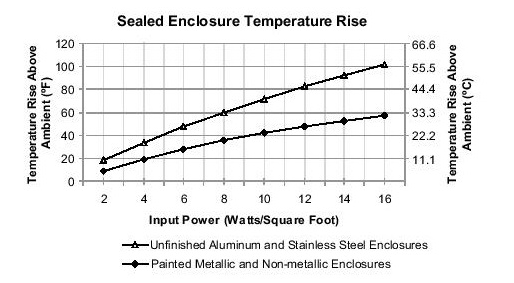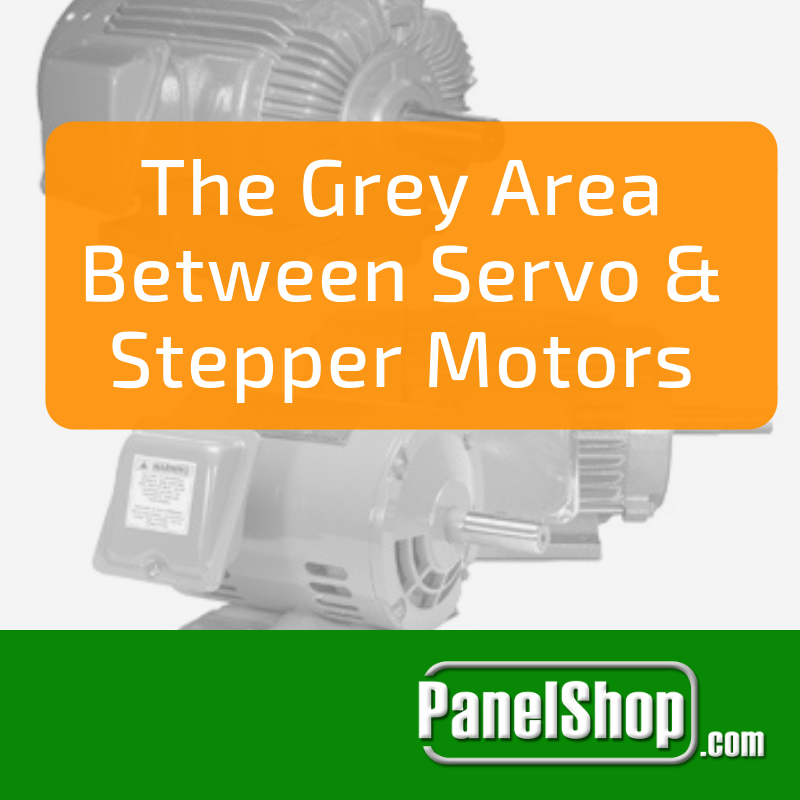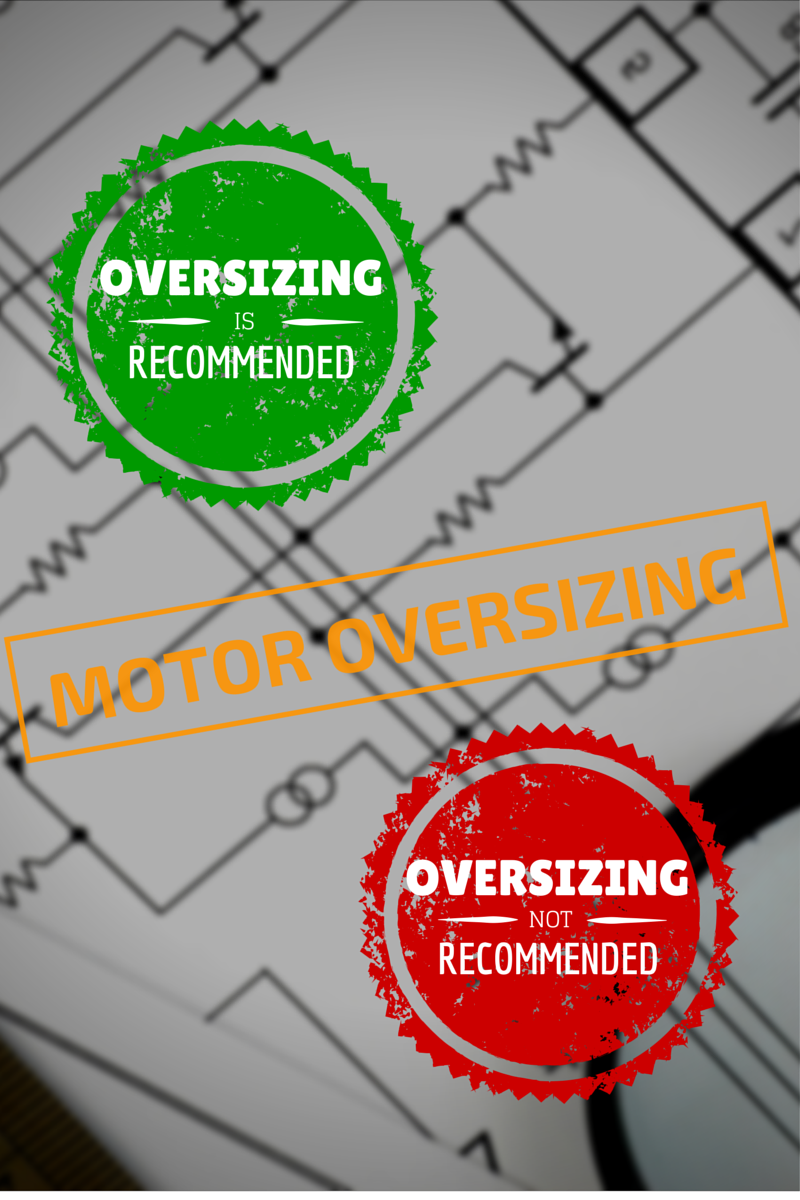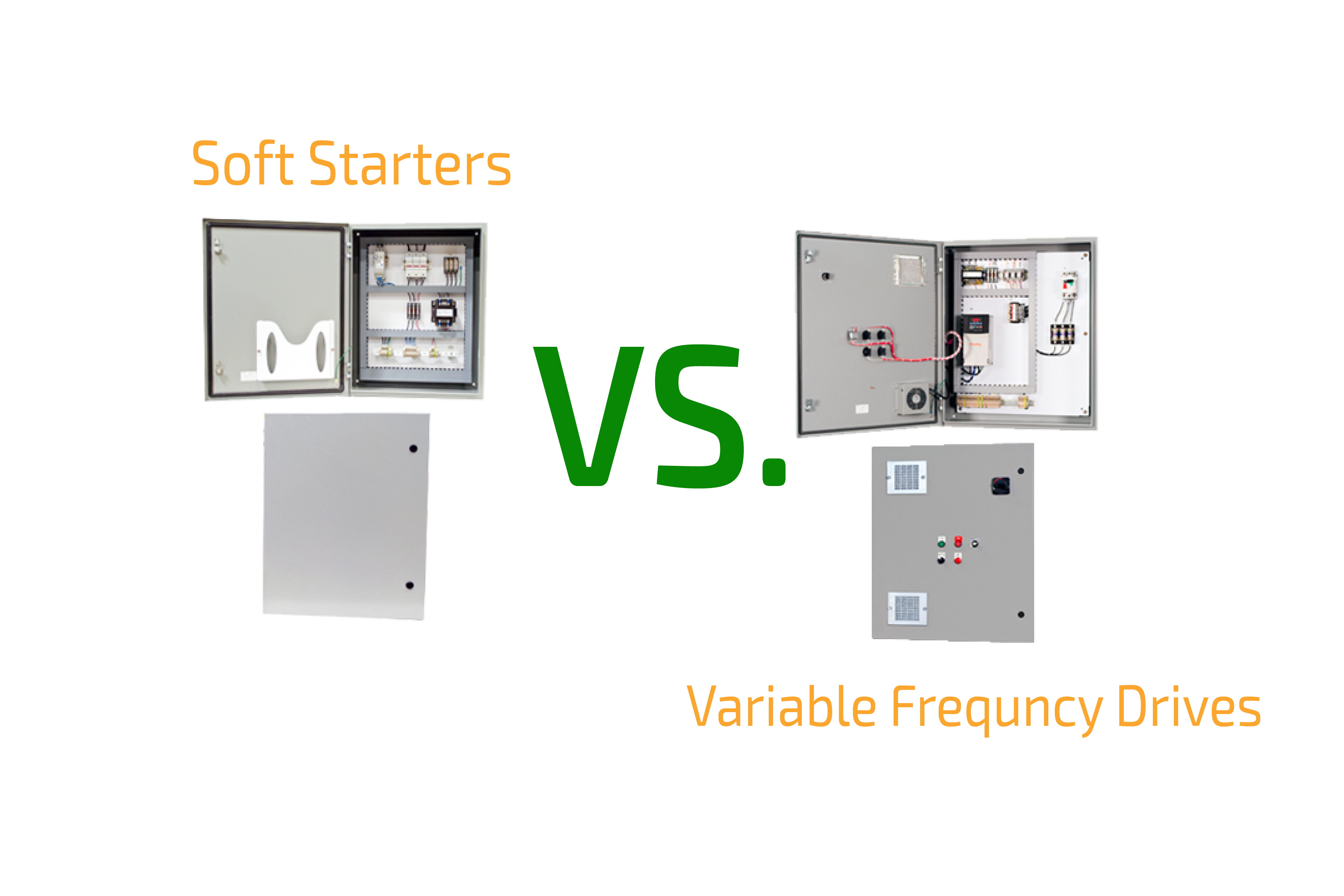
It’s a beautiful day outside. But the sun is high overhead and the temperature is going through the roof. As the air conditioning struggles to keep up, all the machinery, drives, panels are running, doing their job. Then, all of a sudden, everything shuts down. After investigation, you find that one of your drives overheated and shorted out the whole area. Heat dissipation in variable frequency drives (VFDs) or AC drives is an easy thing to overlook, but could lead to devastating downtime. Here are some tips on what to keep in mind when calculating how cool to keep drive enclosures.
Calculating Heat Dissipation
First, let’s look at how to calculate heat dissipation inside the drive enclosures. The main factor in heat distribution is the physical size in the enclosure. The larger the volume of the box, the slower the temperature will rise.
To find how much the temperature may rise, you need two values: the surface area and the power lost in the components as most of that lost energy will become heat. For the surface area, use the following equation using measurements from a box with dimensions X x Y x Z in square feet.
Surface Area = 2[(X x Y)+(X x Z)+(Y x Z)]
If your measurements are in inches, divide the Surface Area by 144. Note that the box volume cannot be used instead of the surface area.
The heat input from each component can be obtained from their respective manufacturer. Add the heat generated from each component together for the total heat input. Divide this value by the surface area to receive units in watts/ft². Compare the value to the chart below to estimate how much heat may rise inside the enclosure. Keep in mind that the finish on the outside of the enclosure could change the amount of heat inside.

Things To Keep in Mind
Before you get set on exactly how you want to keep your ACD drive panels cool, here are some things to consider.
Energy Losses
Make sure you take note of the drive efficiency. As stated above, you can find this out from the manufacturer. Take the efficiency percentage and subtract it by 100% then multiply that by the drive’s power consumption. This will give you how much energy may be lost and changed to heat. Also take into account supporting equipment such as transformers. This equipment could add 4% energy loss. If a drive is constantly started and stopped, then there could be a lot of energy lost by braking resistors.
Temperature Max
All equipment has a maximum operating temperature specified by the manufacturer. Some max temperatures leave a margin for when components heat up. Either way, it’s good practice to keep the equipment at least 20° F below the maximum in order to promote longevity.
So if you’re looking into installing a new drive or if the summer heat is starting to interfere with work, there are some ideas to prevent any meltdowns. As always, give us a call here at PanelShop.com for any questions on keeping the machinery cool:





